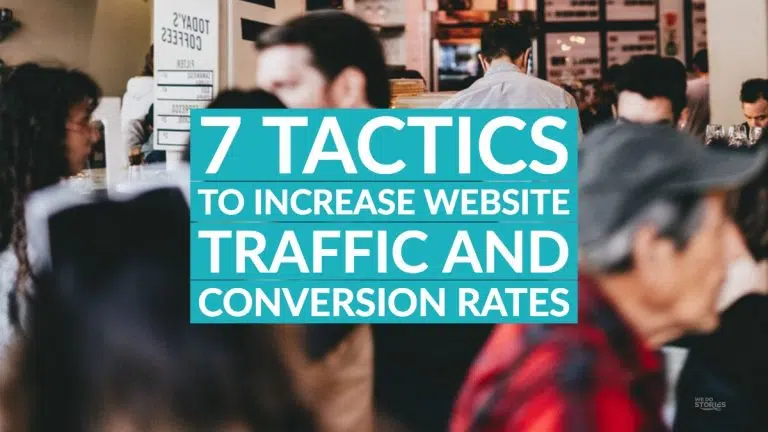Whether you love it or loathe it, there are no two ways about it, social media is a very helpful tool for your business. It reaches people quickly and is an incredibly cost-effective marketing tool when used well.
Brands such as Nike, Amazon and ASOS have cited social media as a key component of their current success; using it to attract new customers to them daily. But, it’s not just helpful for the big companies, it can be a valuable tool for all sizes of organisations and businesses. That is, when it’s used well.
Social media, like any other form of communication, can also be used poorly.
To save you a lot of wasted time and effort, we’ve compiled our top 5 social media mistakes that businesses make when using social media.
Mistake 1 – Selling on Social
The temptation with social media is for businesses to see it as their own advertising channel. This is a bad idea. That’s not saying that you’re not using the platform to increase your audience, engagement and awareness of your brand, you certainly are. And, the end result may well be that you expand your customer base and increase sales. BUT, if you use your social media profiles to say “buy from me, buy from me, buy from me”; you’re going to turn people off you very quickly.
Think about if you met someone new at a business networking event, and they introduced themselves by saying “buy from me” and immediately push their products or services. No introduction to who they are, or show an interest in you, just straight into asking you to buy from them. The chances are that you’d get very bored of the conversation very quickly, and move on to speak to someone who was more interesting and was less obvious with their intention of wanting your cash. The same idea is true for social media. If you are trying to reach an audience who has never heard of you and say “buy from me, buy from me”, the chances are that they’ll move on very quickly. No one likes a conversation where the person they’re speaking to has made it all about themselves.
Social media can be a fantastic way of building trust with a new audience. By using your social channels not to sell, but to educate, entertain and inform, you’re much more likely to build loyalty from both your existing and new customer bases, rather than put them off at the first post.
For more information about this area, see our previous blog ‘Why you shouldn’t sell on Social Media’.
Mistake 2 – Not Listening
Many businesses thankfully are refraining from the ‘selling’ approach to social media, and are being more creative with their platforms. This can include putting out blogs or articles, in an attempt to reach their intended audience.
There is a note of caution here. Even if you have managed to create content that you want people to pay attention to, how are you communicating with them? Are you using your platforms purely to push out your own content, or are you spending time listening to and engaging with others?
If you spend 100% of your time on social media shouting out what you want to say to people, the chances are that it’s not going to be very effective. Think back to the business networking scenario. If you were to stand in the middle of the room and shout to the world in general, it’s highly likely that people will start to switch off from what you’re saying. The same is true if you never ask questions and never engage in other people’s conversations. How often do you enjoy spending time with someone who only ever talk about themselves? Listening to that kind of person become tiring and boring. The best way to network is to show interest in other people. Find out about them and engage with them; listen to them.
By listening to conversations that are going on on social media, you are likely to spot new business opportunities. Listening to others on social media also helps you to refine your messages so that your communication is more effective.
Mistake 3 – Not Knowing the Audience
This may sound very similar to mistake 2 above, but there are some very tangible differences. It is possible to listen to people and still not understand them. In our training, we often find that people can become very focused on the messages that they want to convey to people, without spending any time working out whether the message is really what the audience wants to hear. If you don’t spend any time understanding your audience, it’s very possible that you could waste hours shouting into the digital ether, without anyone wanting to hear what you have to say.
Regarding understanding your audience, social media can be an incredibly helpful tool for businesses who are trying to learn about an audience. You can use social media to find other groups who have similar values to you that you can reach out to. You may also find new customers by being part of different communities and spotting opportunities to engage with people. By listening to what people are saying and understanding their pain points, the chances are that you’ll have a better idea of how to speak to them, and also, how your products or services can best help them.
Mistake 4 – Over automation
There are so many helpful scheduling tools out there that enable people to consistently have a presence on social media (two great examples are Hootsuite and Buffer). It can be tempting, however, to schedule your posts for the month and then leave those lovely bots to do their thing. Yet, if there isn’t a human present to be responsive to any enquiries that come up, you’re likely to waste any opportunity created.
People expect to be able to have a conversation. They expect to matter to you. If your posts for the month are scheduled, and yet no one is overseeing the channel on a regular basis, the chances are you will lose people to a more responsive organisation.
Mistake 5 – Ignoring the Data
It can be tempting to put so much work into developing the content, and then, once it’s out there, saying ‘thank goodness’ and moving on to the next. It’s true that social media does require some time and attention to be done well, but don’t let the next piece of content stop you assessing how the previous article did. There are many valuable metrics and tools that can assist in this. Understanding and evaluating how previous social posts have done can help inform your actions in the future. Are there times that work best for you? What kind of tone works well with your audience?
What topics have inspired the most engagements? Which has led to the least?
Spending time assessing your previous social media performance can pay off dividends when planning your future social media strategy.
Summary
These are the five top mistakes that we frequently see, but there are others. Most of them can be avoided if you just think ‘who are we speaking to’? Ensure that you’re communicating with them, and not trying to shout at them digitally.






